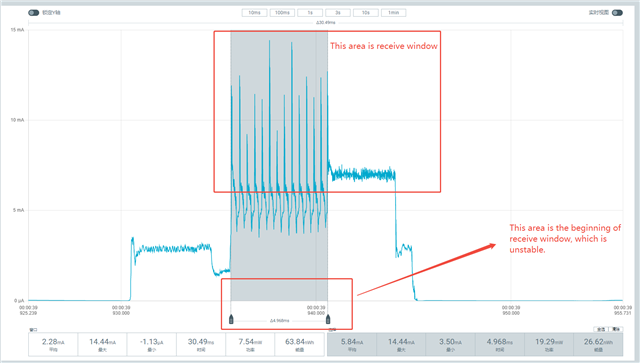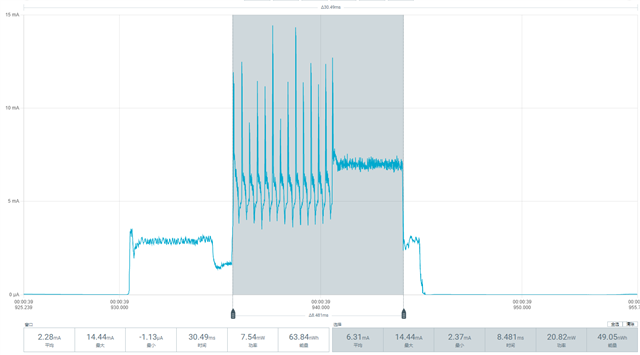Tool/software:
Hi,
I use the Zephyr BLE mesh LPN demo, running in the CC2340R53 chip, do some basic test. This board as a LPN node, and a Silicon lab board as a FN (friend node). Capture the CC2340R53 board power consumption oscillograph, fond there are volatile in the beginning of receive window, so I wanna know the reason. (Because I captured the Silicon Lab and Telink LPN oscillograph, there are not volatile...)

Another question about the receive window time.
Basic environment:
1. Zephyr BLE mesh LPN demo, running in the CC2340R53 chip (The latency scan time configured to 6ms)
2. Telink and Silicon Lab board as Friend node.
----> Using the different Friend Node(Telink or Silicon Lab) to have a look CC2345R53 LPN node real receive window time via capture the power consumption oscillograph.
Phenomenon:
I open the debug log can find: Telink FN node send receive window to LPN is 20ms; Silicon Lab FN node send receive window is 10ms.
Silicon Lab board as the FN node + CC2340R53 LPN node: real captured receive windows about 8~10ms

Telink Lab board as the FN node + CC2340R53 LPN node: real captured receive windows about 4~6ms

I'm confused about the test result. (FN send big receive window, the LPN side real receive window is small; FN node send small receive window, the LPN node real receive window is big)
Can I think that LPN node real receive window time be impacted by the Friend FN response time in my test? Because I will think the small recv window (FN node sent) + CC2340R53 LPN environment will have a small real recv window (LPN node) before I start comparison.
Thank you in advance

